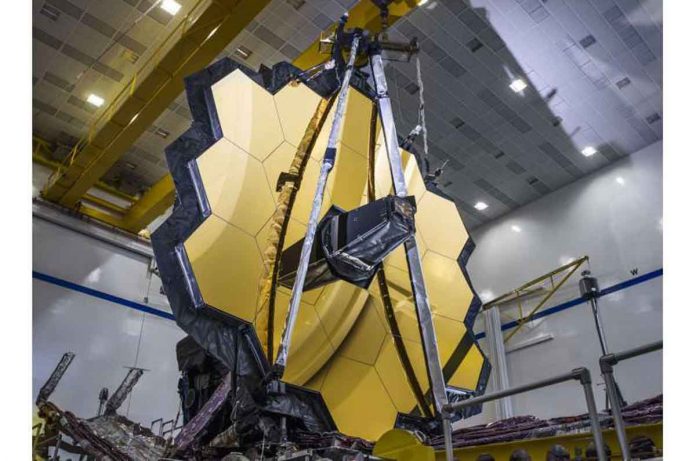The James Webb Space Telescope, a collaboration between NASA, ESA, and the Canadian Space Agency, will soon reveal unprecedented and detailed views of the universe with the release of its first full-color images and spectroscopic data.
The following is a list of cosmic objects that Webb targeted for these first observations, which will be released during NASA’s live broadcast on Tuesday, July 12 at 10:30 a.m. EDT (7:30 a.m. PDT). Each image will be made available on social media as well as the agency’s website at the same time.
These listed targets below represent the first wave of full-color scientific images and spectra the observatory has gathered, and the official beginning of Webb’s general science operations. An international committee comprised of representatives from NASA, ESA, CSA, and the Space Telescope Science Institute chose them.
The Carina Nebula: The Carina Nebula, located approximately 7,600 light-years away in the southern constellation Carina, is one of the largest and brightest nebulae in the sky. Nebulae are stellar nurseries that give birth to stars. Many massive stars several times the size of the Sun can be found in the Carina Nebula.
WASP-96b (spectrum): WASP-96b is a gas-rich giant planet outside our solar system. The planet orbits its star every 3.4 days and is nearly 1,150 light-years away from Earth. It has roughly half the mass of Jupiter and was discovered in 2014.
The Southern Ring Nebula: The Southern Ring, also known as the “Eight-Burst” nebula, is a planetary nebula, which is an expanding cloud of gas that surrounds a dying star. It has a diameter of nearly half a light-year and is about 2,000 light-years away from Earth.
Stephan’s Quintet: Stephan’s Quintet is located in the constellation Pegasus, approximately 290 million light-years away. In 1787, it was the first compact galaxy group to be discovered. Four of the quintet’s five galaxies are locked in a cosmic dance of repeated close encounters.
SMACS 0723: Massive foreground galaxy clusters magnify and distort the light of objects behind them, allowing for a deep field view of both extremely distant and intrinsically faint galaxy populations.
The publication of these first images marks the official start of Webb’s science operations, which will continue to investigate the mission’s key scientific themes. Teams have already applied for time to use the telescope in its first “cycle,” or year of observations, through a competitive process.

